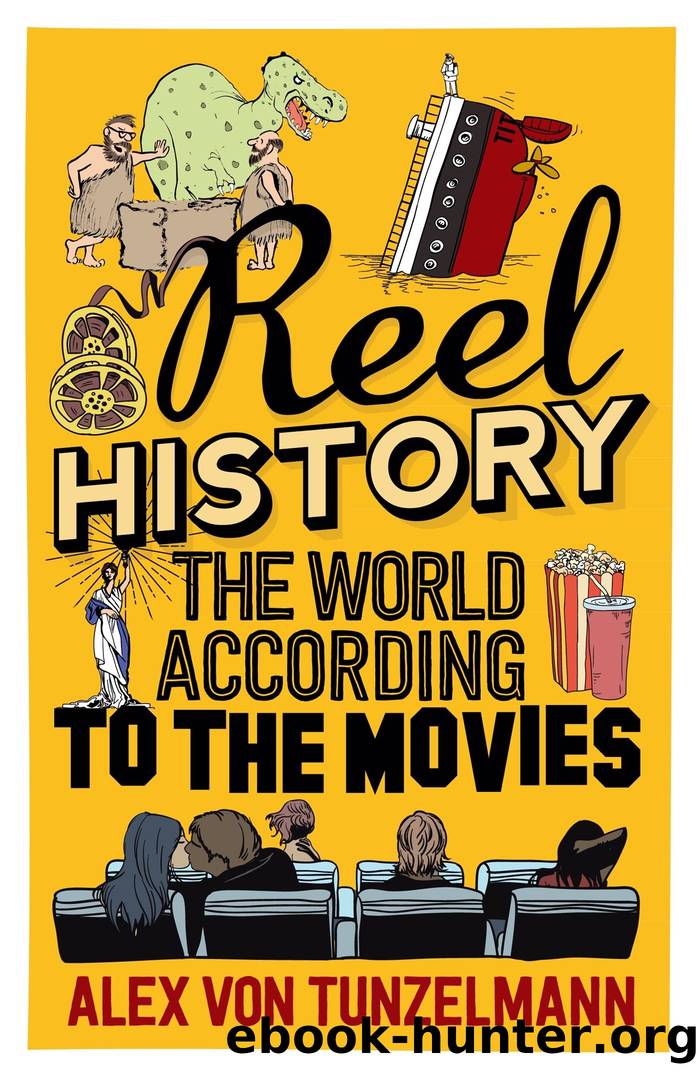Reel History by Alex Von Tunzelmann

Author:Alex Von Tunzelmann
Language: eng
Format: epub
Publisher: Atlantic Books
1832
Les Misérables (2012)
Director: Tom Hooper ⢠Entertainment grade: C ⢠History grade: C
People: The film begins with Jean Valjean (Hugh Jackman) completing nineteen years of hard labour: the penalty for stealing bread and repeatedly trying to escape. His overseer is the unrelenting Javert (Russell Crowe). Victor Hugoâs novel was inspired in part by the true story of Eugène-François Vidocq, who turned a criminal career into an anti-crime industry. He created the Bureau des Renseignements, said to be the worldâs first detective agency, in 1833, though he himself continued to be pursued by police. Vidocq was friends with several authors, including Hugo, Honoré de Balzac and Alexandre Dumas père. In Les Misérables, Hugo split him into two characters, Valjean and Javert, at odds with each other. So this is an eighteenth-century Fight Club. With singing.
Grime: The reformed Valjean becomes mayor of Montreuil-sur-Mer. Young Fantine (Anne Hathaway) is fired from one of his factories. On the streets, she sells her hair, then her molars, then her body. Cue the standout solo, âI Dreamed A Dreamâ. Like many of the big numbers in this film, itâs shot in blistering, uncut close-up. With each actor you get a chance to see the smears of stage blood, the sweat, the tears caught in the eyelashes, the veins throbbing in the forehead on the high notes, the dirt, the spots, the drool, the snot and the poverty stains on whatever remains of their teeth. In a movie already determined to cover all its characters in filth, vomit and human excrement, this is a bit relentless. A historian canât complain about the past being shown to be dirty â it was â but it seems contrary to insist on gritty realism if youâre going to have your cast express themselves exclusively in show tunes.
Justice: Hathawayâs performance veers between fragile sobbing and Susan Boyle-style operatics. Itâs so nakedly an Oscar clip that they might as well have flashed up the words âOSCAR CLIPâ on the screen, as they do in Wayneâs World when Wayne splashes water over his eyes and bawls, âI never learned to read!â Fantine hits back at a would-be customer. Javert arrests her; Valjean performs a rescue. But why is the saintly Valjean hanging around in the red-light district? This is a lot easier to get away with on stage. Melodramatic though it may be, Fantineâs story is apparently based on a real event. In 1841, Hugo himself saved a woman falsely accused. The story is described in his Things Seen (1887).
Politics: There is no historical context provided for the June Rebellion of 1832 beyond a general sense that students are annoyed and ordinary working folk are hard done by, which they have been throughout history. âLamarque is dead!â trills Enjolras (Aaron Tveit). âThe peopleâs man!â That would be General Jean-Maximilien Lamarque, a political opponent of Louis-Philippe, whose death during a cholera epidemic provided the trigger for the rebellion. The film does little to correct the popular misconception that Les Misérables is set in the
Download
This site does not store any files on its server. We only index and link to content provided by other sites. Please contact the content providers to delete copyright contents if any and email us, we'll remove relevant links or contents immediately.
Papillon by Henry Charrière(796)
Watercolor With Me in the Forest by Dana Fox(590)
The Story of the Scrolls by The Story of the Scrolls; the M(556)
This Is Modern Art by Kevin Coval(459)
A Theory of Narrative Drawing by Simon Grennan(456)
Frida Kahlo by Frida Kahlo & Hayden Herrera(445)
Boris Johnson by Tom Bower(443)
Banksy by Will Ellsworth-Jones(435)
AP Art History by John B. Nici(429)
Van Gogh by Gregory White Smith(426)
Draw More Furries by Jared Hodges(423)
The Art and Science of Drawing by Brent Eviston(423)
Glittering Images: A Journey Through Art From Egypt to Star Wars by Camille Paglia(420)
War Paint by Woodhead Lindy(414)
Scenes From a Revolution by Mark Harris(413)
100 Greatest Country Artists by Hal Leonard Corp(392)
Ecstasy by Eisner.;(386)
Young Rembrandt: A Biography by Onno Blom(374)
Theater by Rene Girard(355)
